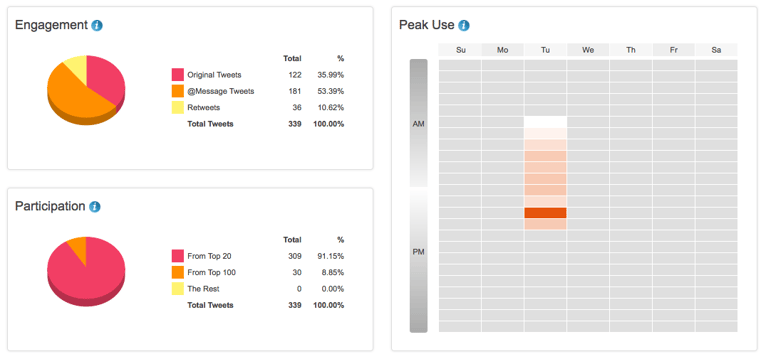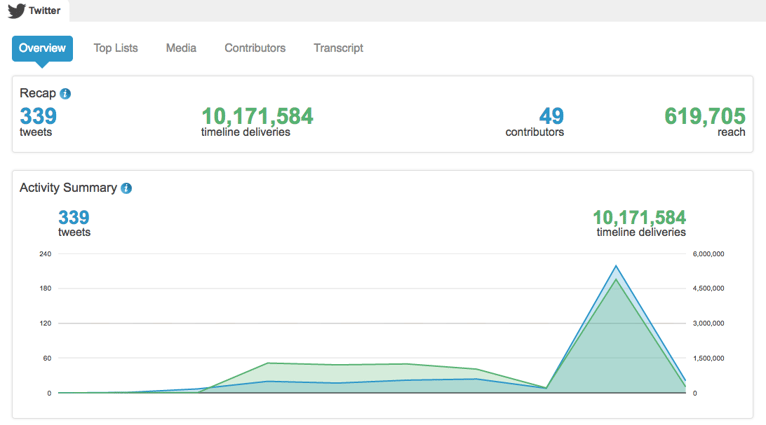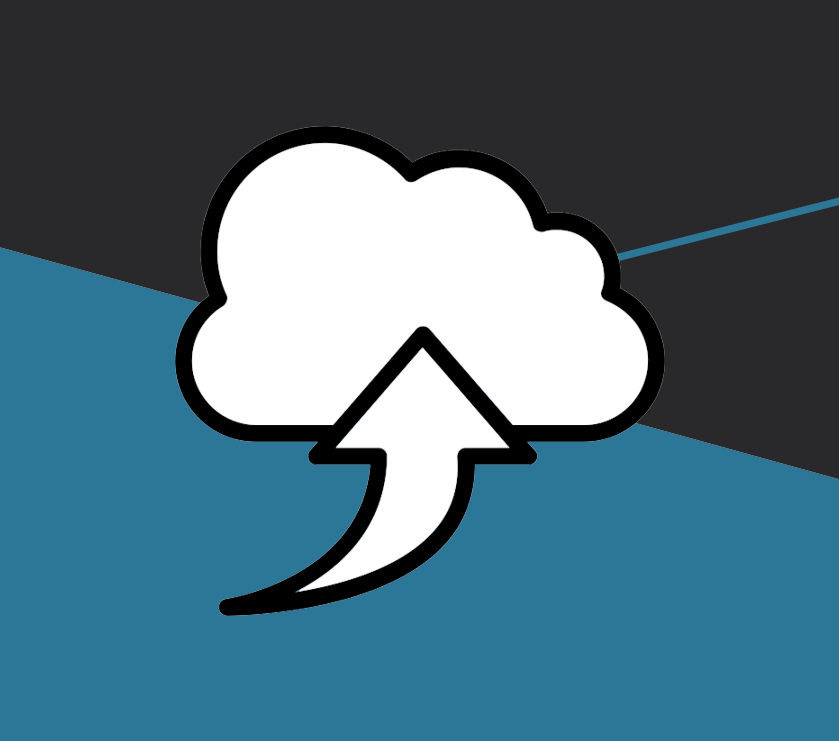Insights On Twitter Chats and Content Marketing for Healthcare
Doug Miller#Digital Marketing, #Inbound Marketing, #Social Media, #Community

Learn about the value of joining Twitter chats, with notes from a recent conversation about the health care industry's involvement in content marketing.
Recently, I had the opportunity to participate in an online conversation about digital (content) marketing and the health care industry. We've had the chance to work with a few clients in that industry, and I'm pretty proud of some of the ways we've helped them. I thought this offered a good chance to look at some of this work, along with some other interesting thoughts from the Twitter chat, as well as looking at how Twitter chats in general can be helpful from a (very meta) content marketing POV.
What Are Twitter Chats?
For those who are uninitiated, the Twitter chat can be a bit over-stimulating and hard to follow. However, the premise is simple: a host will Tweet out a topic along with a hashtag for categorization, and anybody can join in the conversation by including that hashtag in their Tweets. In this case, the chat topic was the health care industry and content marketing, and the hashtag, which was developed by the folks at Paper.li, was #bizheroes.
Q1: Can the HealthCare Industry benefit from Online Marketing and Social Media? #bizheroes
— Paper.li (@paper_li) January 31, 2017
Participants who want to answer questions will do so by listing which question they are answering (A1 is an answer to Q1) and including the hashtag for categorization. Here's my answer to the question above, for example:
#bizheroes A1) Yes. The same way other orgs must IMO - by adding value to communities served via content.
— Douglas Lee Miller (@videoin) January 31, 2017
Twitter chats can move pretty quickly, and depending on how many people are participating in the chat, the answers can arrive at a rate that can be hard to follow. It can also feel frustrating if you are trying to answer questions while trying to take some time to compose a thoughtful answer. Other participants may be moving on to later questions while you are still working on answering one of the first ones. But that's ok!
The informal nature of the chat allows for participants to engage with it at their own rate. Also, even though the idea is for the chat to take place in real time, it isn't uncommon (because of the hashtag categorization) for participants to join in hours, or sometimes even days, later. No matter what, the conversation continues. Ideally, to get the most out of the ad hoc community that emerges around the chat and the tag, it is best to be present during the real time event, however.
Tracking Twitter Chats
In order to get a better view of a Twitter chat as a whole, there are some tools available that can help you organize your responses. For example, you can see data about the #bizheroes Twitter chat, including a transcript of the entire chat, at a report page created using the free version of the tools available from Hashtracking.com.

Data from services like Hashtracking can be useful for organizations who are interested in understanding the communities their content might serve. For example, Hashtracking lets you view the data around the usage of the hashtag associated with this Twitter chat:

You can also set up rules within services like IFTTT.com or Zapier.com that add participants of particular Twitter chats to Twitter lists. These lists are great for building and tapping into a community as it exists online, and they are a great way to get your content in front of folks who will find it valuable. You can even connect with participants directly by following them or finding out which other online communities or Twitter chats they participate in.
Content Marketing and Health Care
As you can see from my participation in the #bizheroes Twitter chat, I believe that content marketing can be a very helpful thing for the health care industry, and the work we've done with our clients has shown that to be true. In my responses to this Twitter chat, I outlined what I think are the best places to get started, and (surprise) it's not unlike what we would recommend for any organization from any industry: focus on the value your content can bring to the communities it is designed to serve.
As the Twitter chat continued, the questions got more specific:
Q2: What are some ways of using Online Marketing in the HealthCare Industry? #bizheroes
— Paper.li (@paper_li) January 31, 2017
We have a few clients in the health care industry, and we've had the chance to do some exciting work for them, but there is always something new on the horizon when it comes to the digital space. I mentioned that, in terms of community, I'd love to see the healthcare industry make use of a tool that was originally designed for news organizations:
#bizheroes A2) I should like to see #Healthcare orgs ask & listen via tools like @coralproject
— Douglas Lee Miller (@videoin) January 31, 2017
The reality of the emergence of content marketing is that just about every organization is now a media outlet. As such, in order to provide value to the people who consume their content, they should use the same kind of strategies as media outlets. Part of that involves LISTENING to find out what kind of content might be useful, and the tool I mentioned above is a unique one for doing just that.
When it comes to content marketing strategy, it's hard not to let the conversation drift immediately into tactics involving tools like the one I mentioned above. It wasn't a surprise to see that the questions in the Twitter chat went in that direction:
Q4: Are there any platforms that work better for Online Marketing specifically for the HealthCare Industry? #bizheroes
— Paper.li (@paper_li) January 31, 2017
My reply was what we recommend to just about any industry: no matter what platform you are picking, make sure you can use it to get the right content in front of the right user at the right time, and track the efficacy of your efforts so you can get better over time.
#BIZHEROES @paper_li A4) Whatever your org's industry & needs, selecting a CMS &/or MAP that offers personalization/segmentation is useful
— Douglas Lee Miller (@videoin) January 31, 2017
Finally, when it comes to both Twitter chats and content marketing for health care, I cannot over-emphasize the importance of knowing the value your content can add to the right audience.
One of the last questions I answered had to do with the first steps for organizations in the health care industry who are getting into content marketing. Another question involved sharing some successes or challenges we've seen. To me, the answer to both was the same: many orgs, particularly larger ones, don't really have a proper grasp of what content they already have and how it is being consumed (or not) or useful (or not) before they create new content.
That's why I always recommend that any content marketing effort begin with a content audit of some variety. This includes more than just web pages; it should take all types of content into account, including Powerpoint presentations, PDFs, videos, audio files, infographics, images, etc. Many organizations don't realize how many content opportunities they already have at their fingertips.
#bizheroes @paper_li A9) Do a content audit!
— Douglas Lee Miller (@videoin) January 31, 2017
Another issue facing health care orgs (and other larger orgs with lots of regulatory changes, industry advances, or beaurocracy) is that sometimes old content just needs to come down. One of the successes we've been able to have with a health care client of ours involved pulling data from a number of crawls and sources regarding the usage of particular areas of their site, helping us to mitigate any search engine optimization (SEO) damage that might be a result of purging dated content. Content purges can often be just as important as creating new content in making sure that what is offered through your content marketing channels actually adds value to the audiences you serve.
I hope this advice has been useful to you, whether you are from a health care org or not, or if you're interested in participating in Twitter chats or not. Do you have any questions about the ways we can help you evaluate the efficacy of your existing content in order to apply it to your efforts to create new content? Please leave a comment here on this post or shoot us a note.
Related Posts

You Should Migrate Your CMS to the Cloud. Here's Why.
Thinking about migrating your CMS to the cloud? Here are 6 key benefits to understand.

The 3 Main Types of SSL Certificates to Know
Learn about the 3 main types of SSL certificates to help you decide which one is best for your business.
Results Matter.
We design creative digital solutions that grow your business, strengthen your brand and engage your audience. Our team blends creativity with insights, analytics and technology to deliver beauty, function, accessibility and most of all, ROI. Do you have a project you want to discuss?
Like what you read?
Subscribe to our blog "Diagram Views" for the latest trends in web design, inbound marketing and mobile strategy.
